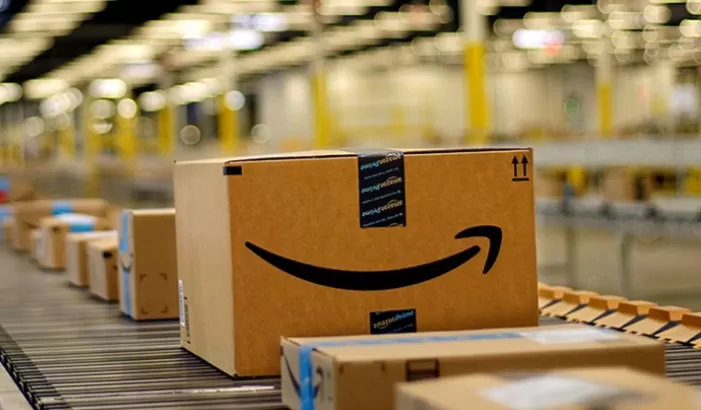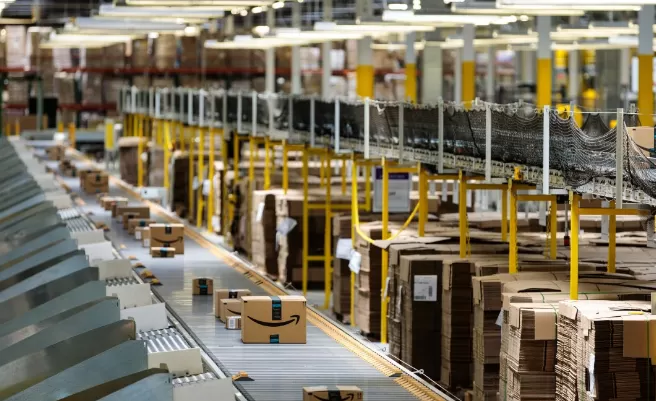Tired of refreshing tracking numbers, only to see your Amazon FBA shipping (US-focused guide for comparison) stuck in "customs clearance" for days? Does the term "port congestion (see how it affects shipping to major ports like Baltimore) surcharge" make you sigh? You're not alone. Most Amazon sellers start with standard shipping lines, but quickly hit a ceiling of unpredictability that hurts their cash flow and seller ranking.
An Amazon FBA Dedicated Line isn't just another shipping option. It's a strategic, door-to-door logistics solution (Amazon FBA door-to-door shipping costs) designed for serious sellers who view their supply chain as a competitive advantage. This guide will cut through the noise. We'll explain what it really is, break down the real costs and timelines for 2024, and give you a concrete framework for choosing a partner you can actually trust.
Beyond the Buzzword: What an FBA Dedicated Line Actually Is
Forget vague marketing terms. A true Dedicated Line is characterized by its consistency and integrated management.
While standard shipping might lump your cargo with others on a first-come, first-serve basis, a dedicated service provides a more predictable and prioritized pathway. Think of it as a "reserved lane" on the logistics highway. The core of its value isn't always a physically exclusive ship or plane (though sometimes it is for large volumes), but a dedicated operational team and streamlined process managing your shipment from pickup to delivery.
The real magic lies in the "DDP" (Delivered Duty Paid) model. With a dedicated line, your freight forwarder (how to pick the right one for Amazon FBA) acts as the importer of record on your behalf. They calculate, pay, and manage all duties and taxes in the destination country before your goods arrive. This eliminates the risk of unexpected customs holds, confusing bills from brokers, and delays that can strand your inventory for weeks.
2025 Cost & Transit Time Benchmarks: What to Really Expect
Providing exact numbers is impossible without details, but every seller needs a benchmark to budget against. These are realistic estimates for Q2-Q3 2024 from major Chinese ports like Ningbo (NGB) or Shenzhen (SZX). Remember, these are all-inclusive estimates for the dedicated service (DDP), not just base freight.
To Major US Airports/Hubs (LAX, ORD, ATL):
Sea Freight (LCL - Less than Container Load): $3.20 - $4.80 per kg (minimum 100kg+). Why the range? It depends on commodity type (duty rates) and exact destination. Transit Time: 20-28 days door-to-door. This includes 4-5 days for origin pickup, documentation, and export customs, 14-16 days on the water, and 5-7 days for US customs clearance (breakdown of the inspection process), deconsolidation, and final trucking to FBA warehouses.
Air Freight: $6.50 - $9.00 per kg. Transit Time: 8-12 days door-to-door. Air is faster on the move (3-5 days flight + transit), but don't underestimate the time needed for terminal handling, security checks, and customs on both ends.
To European Hubs (AMS, FRA, LHR):
Sea Freight (LCL): $2.80 - $4.20 per kg. Transit Time: 30-38 days door-to-door. The longer transit is due to maritime routes and potentially longer customs processing within the EU.
Air Freight: $5.80 - $8.50 per kg. Transit Time: 10-14 days door-to-door.
Pro Tip: The cheapest rate is often the most expensive. A quote that's 20% lower than the market average almost always means the provider is cutting corners, likely on customs brokerage, which will cost you dearly later.
The Step-by-Step Journey of a Dedicated Line Shipment
Understanding this process shows you where the value is created and why it's more reliable.
Booking & Documentation: You provide commercial invoice, packing list, and Amazon FBA ID. A good provider will audit these for Amazon compliance before shipping.
Pickup & Origin Customs: Your forwarder arranges pickup from your supplier. Their team handles China export customs declaration. This is where errors can cause massive delays.
Consolidation & Loading: Your goods are palletized, labeled with FBA labels, and consolidated with other dedicated cargo in a secure warehouse. This is the "dedicated" part—your goods aren't waiting for a random container to fill up.
International Transport: The cargo moves via your chosen mode (air or sea). You receive a master bill of lading or air waybill.
Destination Clearance (The Key Differentiator): This is the most critical phase. Your forwarder's overseas partner, acting as the importer of record, files all entry docs and pays duties and taxes before the goods arrive. This pre-clearance is what avoids port holds.
Deconsolidation & Last-Mile Delivery: The shipment is unloaded at the destination warehouse, unpacked from the consolidated container, and sorted. A dedicated appointed trucker with an Amazon-approved carrier agreement then delivers it to your specified FBA facility. You receive the Proof of Delivery (POD) the same day.
5 Non-Negotiable Factors for Choosing Your Dedicated Line Partner
This is where you separate the true experts from the order-takers.
Amazon SPN Certification: Is the provider in Amazon's Service Provider Network? This is Amazon's vetting process. It doesn't guarantee perfection, but it filters out the least professional operators. (This is where you'd mention if you are SPN certified).
Transparent DDP Customs Expertise: Drill down here. Ask: "Can you walk me through your process for handling IRS Importer of Record requirements for DDP shipments?" A vague answer is a red flag. They should explain their bond and EIN filing process.
Overseas Infrastructure: Do they own or have a deeply integrated partner at the destination? A website is easy to build; a warehouse and a skilled customs team in the USA or EU are not. Ask for the name of their US partner and look them up.
Proactive Communication Protocol: Will you have a single point of contact? What is their standard update frequency? Expect at least weekly updates for sea freight and bi-weekly for air. The best providers offer a portal with real-time tracking.
Value-Added Services (The Hidden Time-Savers): Can they handle Amazon-specific needs like FNSKU labeling, poly-bagging, or case carton requirements in their overseas warehouse? This can save you from costly prepping fees or having to use a separate third-party prep center.
Frequently Asked Questions (FAQs)
Q1: If my goods fail Amazon's receiving process due to a prep issue, what is the process and who is liable?
A: Liability typically ends once we obtain Proof of Delivery (POD) from the Amazon warehouse. While we ensure cargo is delivered intact and according to Amazon's shipping requirements (pallet height, weight), internal prep issues (like incorrect FNSKU labels or polybagging) are the seller's responsibility. Some forwarders offer in-house prep services to mitigate this risk entirely.
Q2: How do you handle "peak season" surcharges, and how can I avoid them?
A: Peak season surcharges (PSS) from carriers are inevitable during Q4. Reputable forwarders should communicate these potential fees upfront during the quoting process, not surprise you later. The best way to avoid them is to ship early and lock in your space weeks in advance. We offer early-booking discounts and guaranteed capacity contracts for our dedicated clients.
Q3: What specific insurance options do you offer for dedicated line shipments?
A: We offer All-Risk cargo insurance, which covers physical loss or damage from external causes during transit. It's highly recommended. The cost is typically a small percentage of the goods' value. You must declare the full value accurately; under-declaring can void the policy. We can provide the certificate of insurance upon request.
Q4: Can I ship lithium batteries, cosmetics, or other restricted items via a dedicated line?
A: Yes, but with strict protocols. These are "dangerous goods" or regulated commodities. They require special documentation (MSDS, DG certification), compliant packaging, and carrier approval. We have expertise in handling DG shipments and will guide you through the specific declaration and packing process to ensure safety and compliance.
Q5: What happens if my shipment is randomly inspected by Customs?
A: While our pre-clearance process minimizes the risk, random inspections can still occur. If it happens, our customs brokerage partner immediately manages the process. They communicate directly with CBP (or other agencies), provide any requested documentation, and handle the logistics of the inspection. This causes a delay but is handled at no extra cost, aside from any potential demurrage or examination fees charged by the port.
Q6: Can I change the destination FBA warehouse after the shipment has departed?
A: This is extremely difficult and costly. The shipping documentation (Bill of Lading) and customs filings are tied to the original destination address. Changing it requires amending all legal documents, which can lead to significant delays and fees. It's critical to confirm the correct FBA shipment ID and warehouse address before your cargo sails or flies.
Q7: Do you offer storage/warehousing at the destination if I need to stagger my inventory send-in?
A: Yes, this is a key advantage of using a forwarder with overseas infrastructure. Our dedicated lines often include a defined period (e.g., 30 days) of free storage at our destination consolidation warehouse. This allows you to manage your Amazon send-in schedules strategically, avoiding overcrowding and maximizing your IPI score.
Q8: How are volumetric weight calculations handled for my LCL sea freight shipment?
A: For LCL sea freight, you are charged based on the greater of the actual weight or the volumetric weight. The volumetric weight is calculated as (Length x Width x Height in meters) x 1,000 = Volumetric Weight in kg. We always measure your cargo at our warehouse to provide the most accurate quote and avoid adjustments later.
Q9: What is your process for handling cargo damage claims?
A: Upon delivery, you must note any visible damage on the delivery receipt and take photos immediately. You must then notify us within 24 hours to initiate a claim. We will coordinate with the carriers and our insurance provider to investigate and process your claim efficiently, based on the terms of the insurance policy.
Q10: Beyond cost and speed, what is one hidden benefit of a dedicated line I might not consider?
A: Predictable carbon footprint. Because dedicated lines operate on fixed schedules and optimize container space, they generate significantly lower emissions per kg of cargo compared to erratic, non-optimized shipping routes. For brands that value and promote sustainable supply chains, this is a powerful, quantifiable benefit.
Exploring Other Major Amazon Markets?
While this guide focuses on dedicated lines, we also provide detailed guides for other major logistics routes:
United States: Comprehensive US shipping guide with FBA specifics
European Markets: Best freight forwarders for European FBA
Key US Hubs: New York, Los Angeles, Chicago
Logistics Models: Understand 1PL, 2PL, 3PL, 4PL differences
Need Specific Route Information?
Each destination has unique requirements and advantages. Explore our detailed guides for Miami, Seattle, and other major logistics hubs.

 EN
EN
 FR
FR
 ES
ES
 JA
JA
 PT
PT
 RU
RU
 AR
AR






